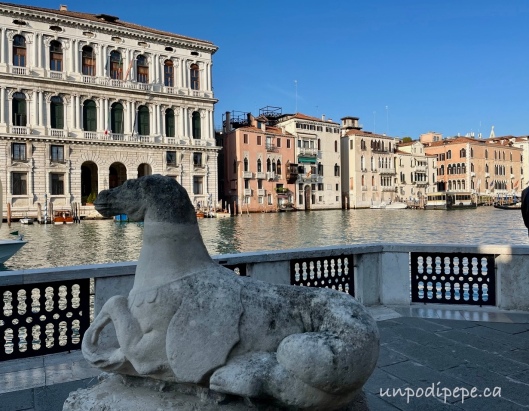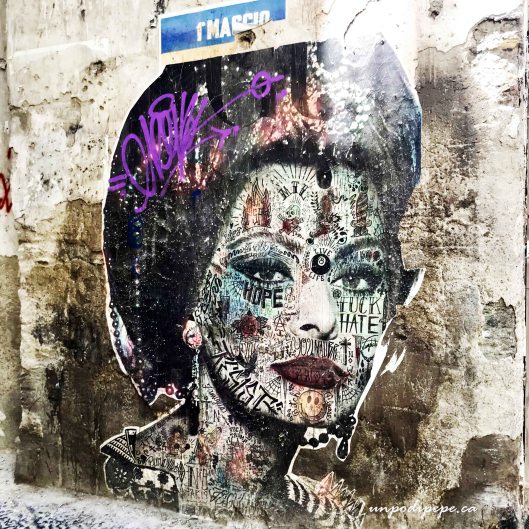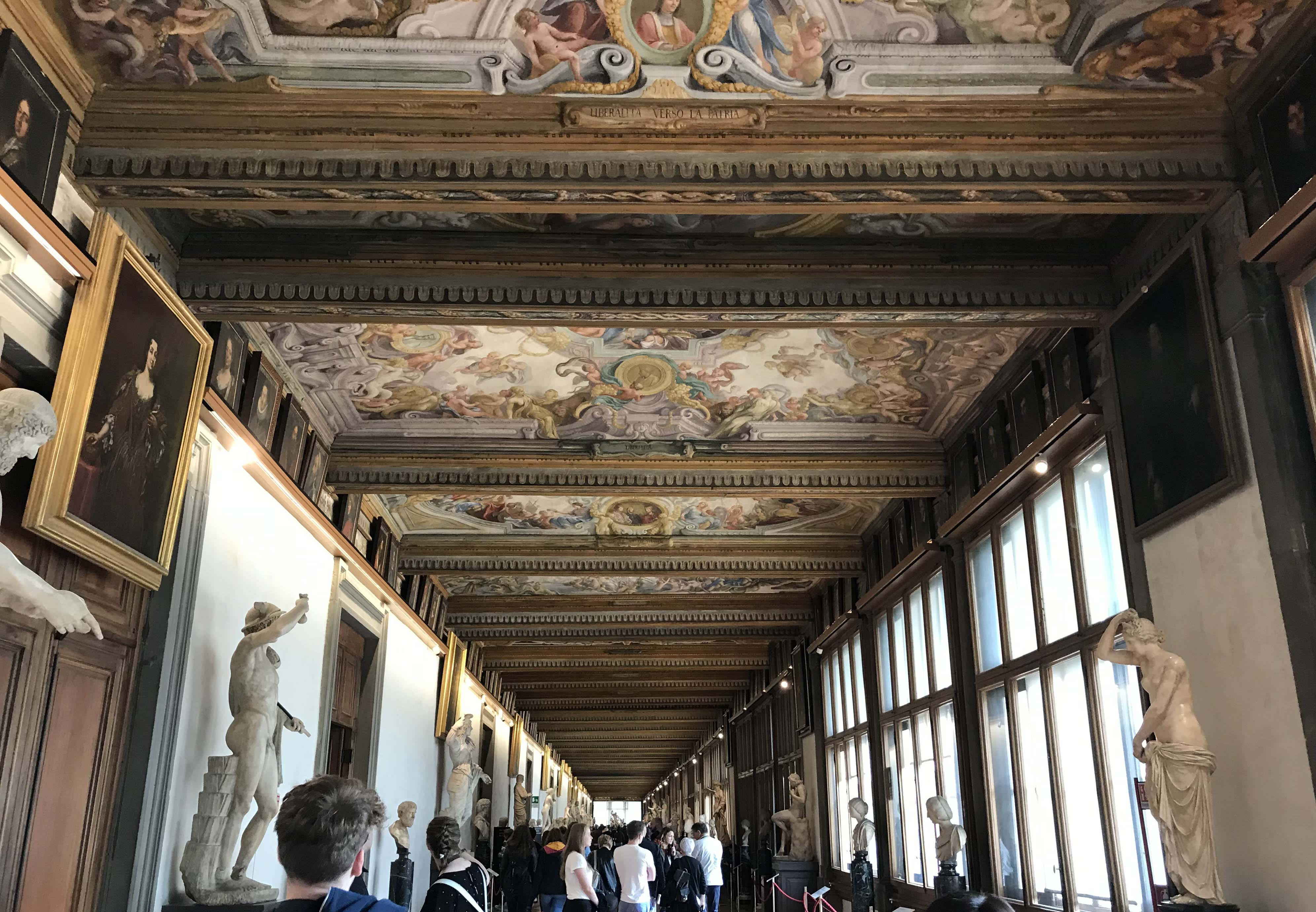Tags
20th Century art, Art history, Grand Canal, Grand Canal Venice, Modern art, Palazzo Venier dei Leoni, Venezia
 The Peggy Guggenheim Collection is one of the most important collections of European and North American 20th Century art. This was on my ‘must see’ list for years. An unintentional 24 year absence from Venezia got in the way, but I finally made it!
The Peggy Guggenheim Collection is one of the most important collections of European and North American 20th Century art. This was on my ‘must see’ list for years. An unintentional 24 year absence from Venezia got in the way, but I finally made it!
Located in her former home, the unfinished Palazzo Venier dei Leoni on the Grand Canal, the museum includes Peggy Guggenheim’s personal collection and a sculpture garden. Since 1980, it is part of the Solomon Guggenheim Foundation, which includes Guggenheim museums in New York, Bilbao Spain and soon Abu Dhabi.
Peggy Guggenheim was born in New York in 1898. Her father, Benjamin Guggenheim, one of 7 brothers who made a fortune in mining, died heroically on the SS Titanic in 1912. He and his valet helped women and children into lifeboats, then changed into their best clothes to ‘prepare to go down like gentlemen’. They were last seen on deck chairs by the grand staircase sipping brandy and smoking cigars.
Peggy came into her inheritance in 1919 and devoted her time and fortune to collecting and promoting modern art. She married Dadaist Laurence Vail and they had 2 children. The family travelled to Europe in 1921, embracing the Parisian Bohemian and American expat scene, then moved to London in the 1930’s fleeing Nazi occupation.
A self-proclaimed ‘art addict’ and a rebel, Peggy wanted to distinguish herself from her business focused family. In 1938, she began a career which would affect the course of postwar art. In London, she opened an art gallery called ‘Guggenheim Jeune’, focusing on contemporary art. The gallery lost a lot of money and was closed after a year, then Peggy moved back to France.
From 1939-40, with the motto ‘buy a picture a day’, she started buying art in Paris and London like a madwoman. She purchased Cubist and Surrealist works of art when they were not yet popular or held in high regard. Purchases included masterpieces by Brancusi, Braque, Dali, Ernst, Picasso, Mondrian and others. The Germans approached Paris just as Peggy was preparing to open a museum for her collection. In 1941 Peggy fled Nazi occupied France for New York with her ex-husband, their children and her future husband, Surrealist Max Ernst.
The Collection followed them to New York. The Louvre was asked to shelter Peggy’s collection from the war, but the request was denied. The now priceless artwork was crated up with ‘household goods’ written on the customs declaration, and a non-Jewish name replacing Guggenheim, then shipped across the Atlantic. Miraculously, everything arrived safely. Peggy’s actions protected the collection, and also supported artists who were in exile and among those branded ‘degenerates’ by Hitler.
‘Art of this Century’ was the Manhattan gallery Peggy opened in 1942 to exhibit her growing collection of Cubist, Abstract and Surrealist art. She also exhibited the work of a new generation of young American artists including Robert Mapplethorpe, Jackson Pollock, Mark Rothko and Robert De Niro Sr. In 1943 the exhibit ’31 Women’ was the first documented all female exhibit in the US
Peggy closed the gallery in 1947 and decided Venezia would be her permanent home. She was invited to exhibit her collection at the 1948 Biennale di Venezia. The Palazzo Venier dei Leoni was purchased in 1949, and Peggy lived there for 30 years. Her art collection moved in with her, and the beautiful setting is as much a work of art as the works inside.
The Venier family was one of the noblest Venetian families. In 1749 they ran out of money and had family issues which prevented completion of the palazzo. Only the 1st of 5 planned stories was completed. Lion heads decorating the façade at water level give the palazzo its name. Made of Istrian stone, it is often mistaken for a modern building because of its low, wide façade. In the late 19th century, the abandoned construction site and garden were purchased by the Levi family and began to take on their present look. There were various other owners and renters until 1949.
From 1951 until her death in 1979, Peggy opened her home and collection to the public for free 3 afternoons a week from March to November. The Peggy Guggenheim Collection opened in 1980, managed by the Guggenheim Foundation as stipulated in her will. In 2017, Peggy’s granddaughter Karole Vail was appointed Director of the Collection.
The Collection has 400,000 visitors per year and includes 326 paintings and sculptures. These include masterpieces of Cubism, Surrealism and Abstract expressionism as well as the works of prominent Italian Futurists and American modernists. Artists represented include Giorgio de Chirico, Gino Severini, Georges Braque, Marcel Duchamp, Joan Miró, Salvador Dali, Pablo Picasso, Constantin Brancusi, Alberto Giacometti, Arshile Gorky, Vasily Kandinsky, Paul Klee, Rene Magritte, Piet Mondrian, Max Ernst, Marino Marini, Jackson Pollock and others. It is a 20th Century art history textbook come to life.
Peggy Guggenheim Collection is located in the Dorsoduro area, across the Grand Canal from Piazza San Marco. It is between the Basilica di Santa Maria della Salute and Ponte dell’Accademia. To get there take a ‘group gondola’ across to Santa Maria della Salute for €2 then head right or cross the Ponte Rialto and head left. Admission is €16 for adults. Hours 10-18 Closed Tuesdays and December 25th.
Ciao, Cristina








































































